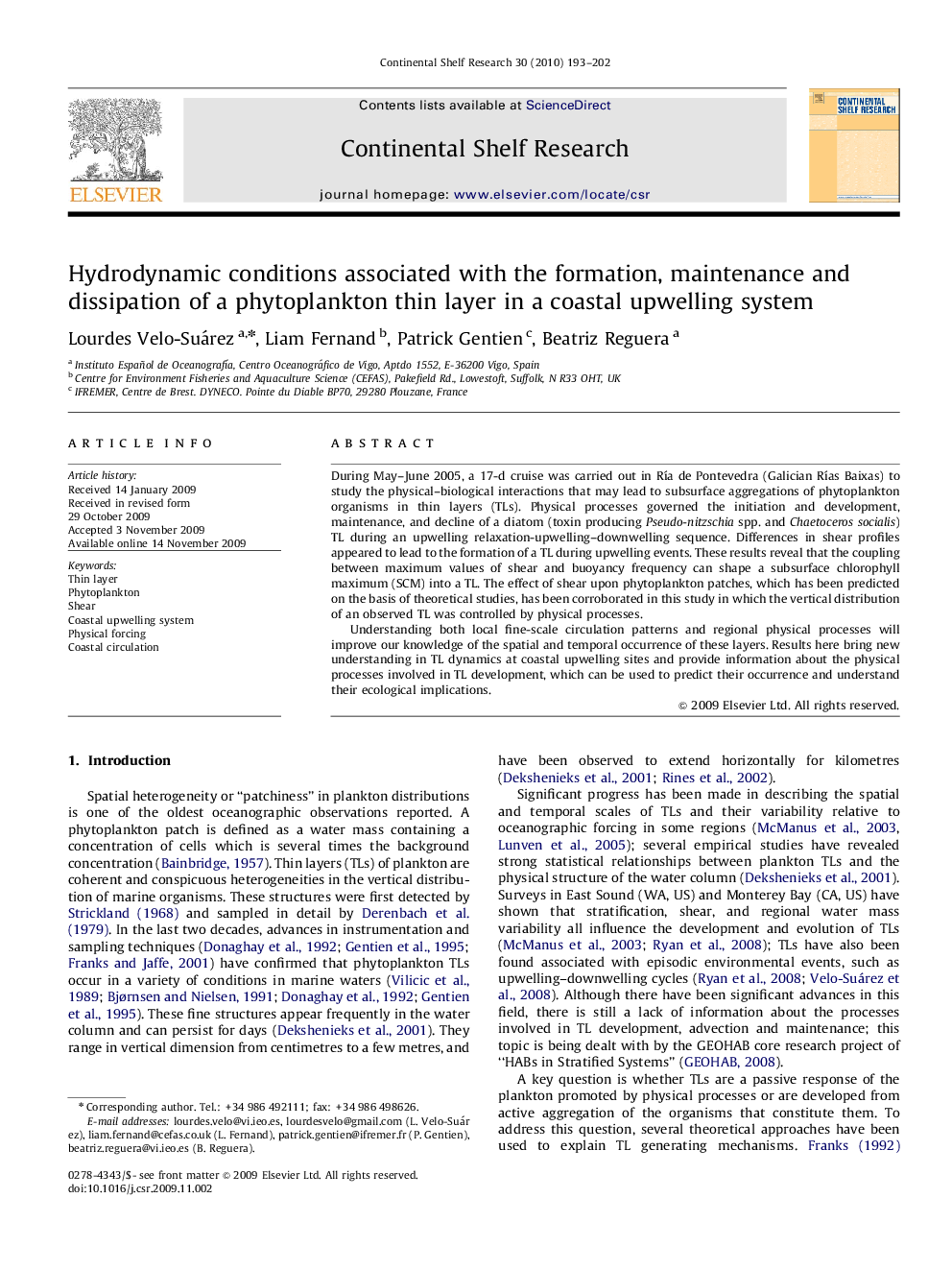| Article ID | Journal | Published Year | Pages | File Type |
|---|---|---|---|---|
| 4533191 | Continental Shelf Research | 2010 | 10 Pages |
During May–June 2005, a 17-d cruise was carried out in Ría de Pontevedra (Galician Rías Baixas) to study the physical–biological interactions that may lead to subsurface aggregations of phytoplankton organisms in thin layers (TLs). Physical processes governed the initiation and development, maintenance, and decline of a diatom (toxin producing Pseudo-nitzschia spp. and Chaetoceros socialis) TL during an upwelling relaxation-upwelling–downwelling sequence. Differences in shear profiles appeared to lead to the formation of a TL during upwelling events. These results reveal that the coupling between maximum values of shear and buoyancy frequency can shape a subsurface chlorophyll maximum (SCM) into a TL. The effect of shear upon phytoplankton patches, which has been predicted on the basis of theoretical studies, has been corroborated in this study in which the vertical distribution of an observed TL was controlled by physical processes.Understanding both local fine-scale circulation patterns and regional physical processes will improve our knowledge of the spatial and temporal occurrence of these layers. Results here bring new understanding in TL dynamics at coastal upwelling sites and provide information about the physical processes involved in TL development, which can be used to predict their occurrence and understand their ecological implications.
